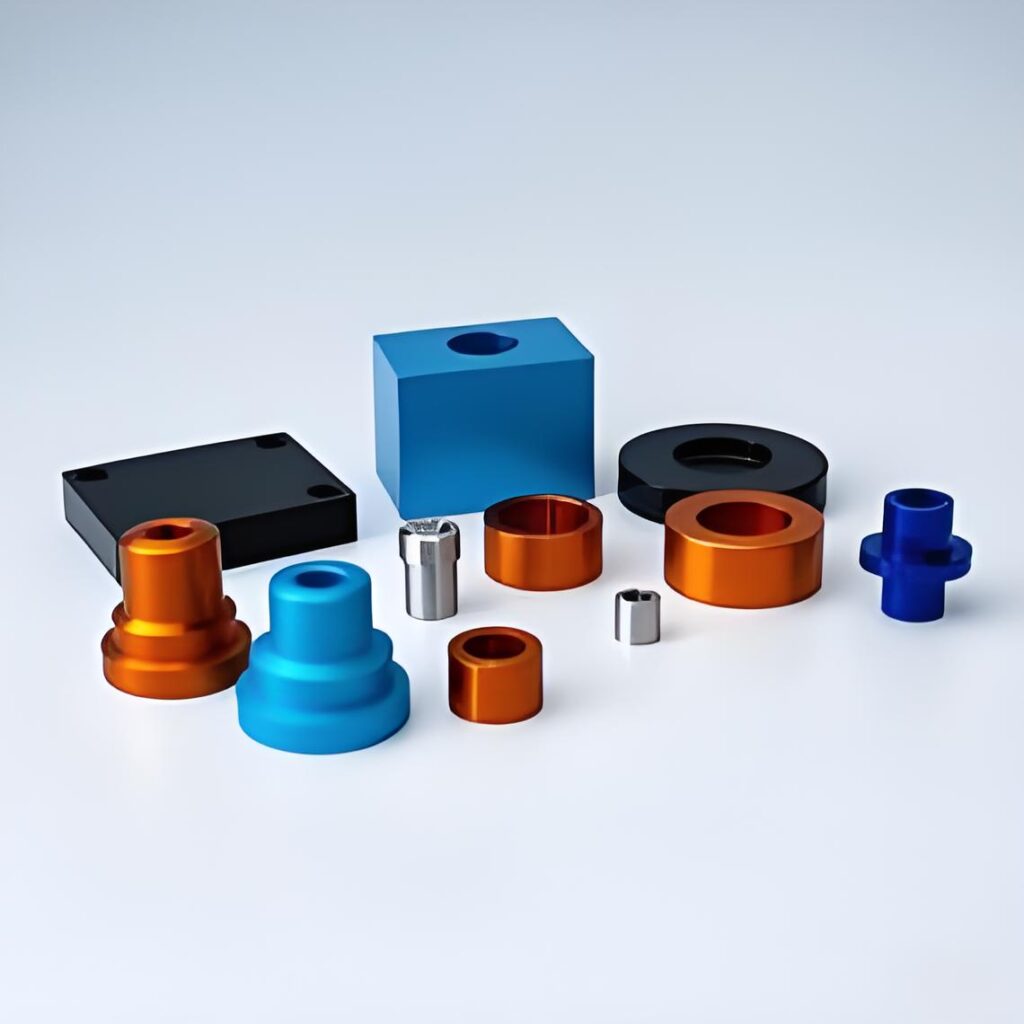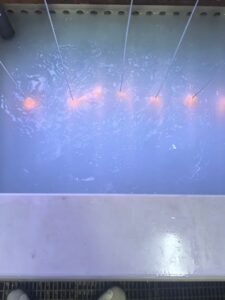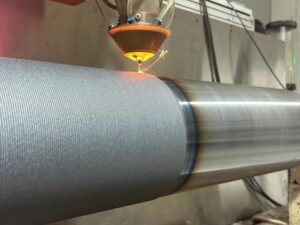What is Powder Coating?
Powder coating is a dry finishing process that applies a protective and decorative layer to metal surfaces, including aluminum. Unlike traditional liquid paints, powder coating uses a fine powder composed of pigment and resin, which is electrostatically applied and then cured under heat to form a durable, smooth finish. This technique has gained popularity in industries ranging from automotive to architecture due to its durability, environmental benefits, and aesthetic versatility.
The process begins with preparing the surface, followed by the application of the powder, which adheres to the metal due to an electrostatic charge. Once applied, the coated item is placed in an oven, where the powder melts and forms a hard, uniform layer. Powder coating is known for its ability to withstand harsh environmental conditions, making it ideal for both indoor and outdoor applications.
Aluminum, a lightweight and corrosion-resistant metal, is a prime candidate for powder coating. Its natural properties, combined with the protective qualities of powder coating, make it a preferred choice for manufacturers seeking durability and visual appeal.
Benefits of Powder Coating Aluminum
Powder coating aluminum offers a range of advantages, making it a popular choice for industries worldwide. Here are some key benefits:
Durability and Longevity
Powder-coated aluminum is exceptionally durable, resisting chipping, scratching, and fading better than many traditional paint finishes. The cured powder forms a tough, protective layer that can withstand UV rays, moisture, and chemicals, ensuring the aluminum maintains its appearance and integrity over time.
Corrosion Resistance
Aluminum naturally forms a thin oxide layer that provides some corrosion resistance, but powder coating enhances this protection. The coating acts as a barrier against moisture and environmental elements, making it ideal for outdoor applications like window frames, railings, and automotive parts.
Aesthetic Versatility
Powder coating offers a wide range of colors, textures, and finishes, from glossy to matte and even metallic effects. This allows manufacturers and designers to customize aluminum components to match specific aesthetic requirements, enhancing their visual appeal for various applications.
Environmental Benefits
Unlike liquid paints, powder coating is an eco-friendly process. It produces minimal volatile organic compounds (VOCs), and any overspray can be collected and reused, reducing waste. This makes powder coating aluminum a sustainable choice for environmentally conscious businesses.
Cost-Effectiveness
While the initial setup for powder coating may require investment, the long-term savings are significant. The durability of the finish reduces maintenance and replacement costs, and the efficient application process minimizes material waste.
How to Powder Coat Aluminum
The process of powder coating aluminum involves several steps to ensure a high-quality finish. Here’s a detailed look at how it’s done:
Surface Preparation
Proper surface preparation is critical for a successful powder coating. Aluminum surfaces must be thoroughly cleaned to remove dirt, grease, and oils. This is typically done through chemical cleaning or abrasive blasting. Additionally, a pretreatment process, such as chromate or phosphate conversion coating, is applied to enhance adhesion and corrosion resistance.
Application of Powder
Once the aluminum is clean and pre-treated, the powder is applied using an electrostatic spray gun. The gun imparts a positive charge to the powder particles, which are attracted to the grounded aluminum surface. This ensures an even and consistent coating, even on complex shapes and intricate designs.
Curing Process
After the powder is applied, the aluminum component is placed in a curing oven, typically heated to temperatures between 350°F and 400°F (175°C to 200°C). The heat causes the powder to melt, flow, and form a smooth, hard coating. The curing time varies depending on the powder type and the thickness of the coating but generally takes 10 to 20 minutes.
Quality Control
Post-curing, the coated aluminum undergoes quality checks to ensure the finish meets specifications. This includes inspecting for uniform thickness, adhesion, and color consistency. Any defects, such as bubbles or uneven coverage, are addressed to ensure a flawless final product.
The precision in these steps is crucial, as improper preparation or application can lead to issues like peeling or poor adhesion. Manufacturers with expertise in powder coating, like those in the machining industry, ensure each step is executed with care to achieve optimal results.
Applications of Powder-Coated Aluminum

Powder-coated aluminum is used across a wide range of industries due to its durability, versatility, and aesthetic appeal. Here are some common applications:
Automotive Industry
In the automotive sector, powder-coated aluminum is used for wheels, trim, and other components. The finish provides resistance to road salts, chemicals, and weathering, ensuring parts remain functional and visually appealing for years.
Architectural Applications
Powder-coated aluminum is a staple in architecture, used for window frames, curtain walls, and cladding. Its ability to withstand harsh weather conditions makes it ideal for building exteriors, while the variety of colors and finishes allows architects to achieve their desired aesthetic.
Consumer Goods
From outdoor furniture to appliances, powder-coated aluminum is found in many consumer products. Its durability ensures that items like patio furniture and kitchen appliances maintain their appearance despite frequent use or exposure to the elements.
Industrial Equipment
In industrial settings, powder-coated aluminum is used for machinery components, enclosures, and structural parts. The coating protects against corrosion and wear, extending the lifespan of equipment in demanding environments.
Aerospace and Marine
The aerospace and marine industries rely on powder-coated aluminum for components that require lightweight materials with high corrosion resistance. Parts like aircraft fittings and marine hardware benefit from the protective and durable finish.
These applications highlight the versatility of powder-coated aluminum, making it a preferred choice for manufacturers and designers seeking both functionality and style.
Challenges of Powder-Coated Aluminum
While powder coating aluminum offers numerous benefits, there are some challenges to consider:
Surface Imperfections
Aluminum surfaces must be meticulously prepared to avoid imperfections in the final coating. Any contaminants, such as oils or oxides, can lead to issues like bubbling or peeling. Ensuring a clean surface requires time and expertise, which can increase production costs.
Limited Repair Options
Unlike liquid paint, powder coating is difficult to repair if damaged. Minor scratches or chips may require the entire component to be recoated, which can be costly and time-consuming. This makes proper handling and maintenance critical for powder-coated aluminum.
Thickness Constraints
Powder coating tends to produce thicker layers than liquid paint, which may not be suitable for applications requiring precise tolerances. In industries like aerospace, where exact measurements are crucial, manufacturers must carefully control the coating thickness.
Color Matching
Achieving precise color matching can be challenging, especially when working with custom colors or attempting to match existing finishes. Variations in powder batches or curing conditions can lead to slight differences in hue, requiring strict quality control.
Initial Investment
The equipment and setup for powder coating, including spray booths and curing ovens, can be expensive. For smaller manufacturers, this initial investment may pose a barrier, though the long-term benefits often outweigh the costs.
Despite these challenges, advancements in powder coating technology and techniques have made it easier to achieve high-quality results. Working with experienced professionals in the machining industry can help overcome these hurdles and ensure a flawless finish.
Your Trusted Partner in Aluminum Machining and Finishing
Powder coating aluminum combines functionality with aesthetics, making it an excellent choice for a wide range of applications. Its durability ensures that aluminum components remain protected in harsh environments, while the variety of finishes allows for creative design possibilities. The eco-friendly nature of the process aligns with modern sustainability goals, and the cost-effectiveness makes it appealing for both large-scale manufacturers and smaller businesses.
When it comes to precision aluminum machining and finishing, Precionn delivers excellence from start to finish. With years of experience in the machining industry, our team ensures that every aluminum component not only meets dimensional requirements but also shines with high-quality finishes like powder coating. We support international clients with end-to-end services, from CNC machining to final surface treatments. At Precionn, quality and customer satisfaction come first.




